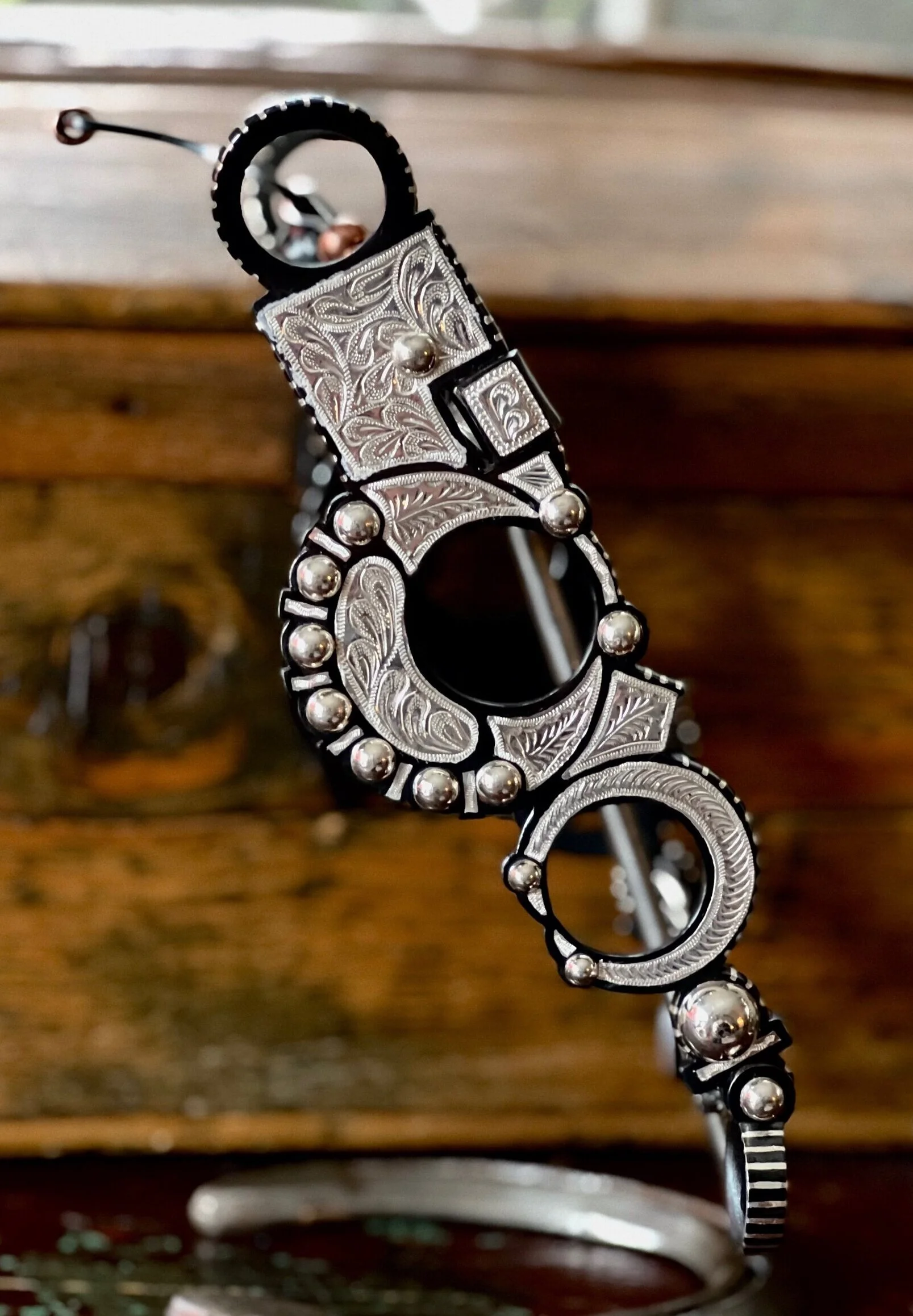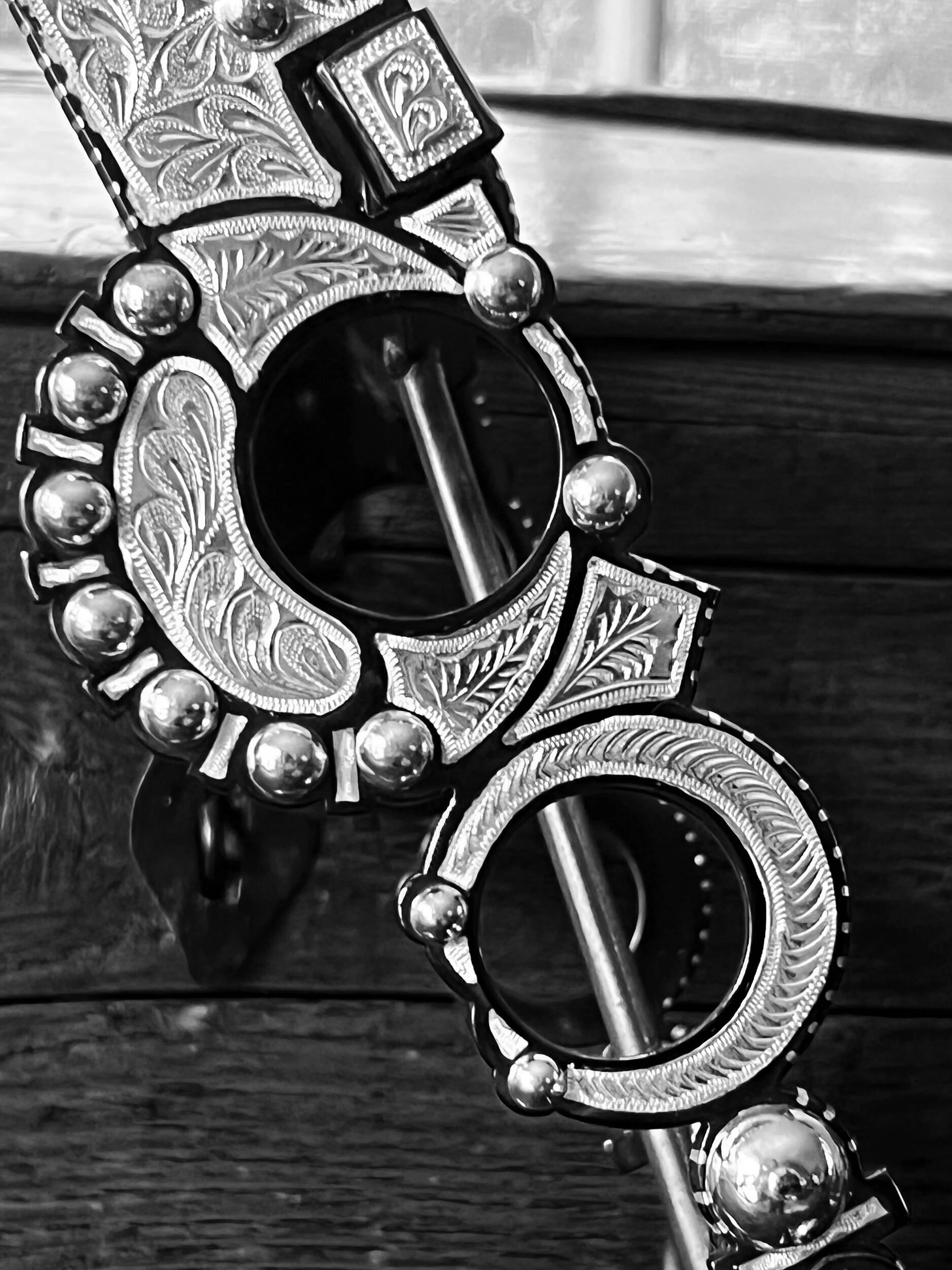Traditional Crescent Moon and Naja Santa Barbara bit






Traditional Crescent Moon and Naja Santa Barbara bit
A traditional Santa Barbara bit with double crescent moons inlaid in sterling silver with old style single point engraving. The lower crescent moon is formed in the shape of a naja. Bit shown in French Grey finish with a traditional 4” Spanish Spade mouthpiece.
Almost every horse culture has its favorite geometric motif. The Moors are given credit for the first use of the star and crescent moon. These motifs were popularized in the vaquero tradition by GS Garcia and the early Hispanic makers of the west.
The crescent moon symbol has been adopted extensively throughout the southwest by the Spanish explorers to the Navajo Indians who used a similar symbol called a naja.
“The Navajo, whether directly from the Spanish, or indirectly through the influence of the Plains Indians, adopted the crescent form as a symbol of fertility. With probable Paleolithic origins, the inverted crescent form (called Naja by the Navajo) has represented the Phoenician goddess of fertility, Astarte, and is mentioned in the Book of Judges among the "ornaments on camels' necks." The Moors – who dominated Spain for eight centuries – adopted the crescent as a horse's bridle ornament, to protect the horse and rider from "the evil eye". The Spanish then brought the idea to the Americas in the late 16th century. The Navajo, whether directly from the Spanish, or indirectly through the influence of the Plains Indians, adopted the crescent form for their horse headstalls, placing the crescent front and center in the browband of the bridle. Later it became the crowning achievement of their squash-blossom necklaces, hanging symmetrically at the center of the necklace when worn. Although the Navajo claim that the Naja has no precise symbolic or spiritual significance, it is ubiquitous in their culture and held in high esteem."
